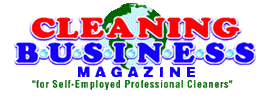Bidding and Estimating Column
Production Rates and Cost per Square Foot
Seldom does a day go by that someone doesn’t ask me about pricing and production rates for the cleaning of commercial buildings. Sometime it’s about a small space or building and other times it’s hundreds of thousands or even millions of square feet and the reality from my perspective doesn’t change.
There is an almost endless list of variables in each building that need or should be taken into consideration when calculating a realistic price or production rate for cleaning services. An even more important and overriding factor is how you go about doing the work. The issue of how you workload the building and what equipment and processes are used, have an equal or greater impact on determining the amount of labor and costs required to get the work done in a way that meets the cleaning specifications.
Pricing
Pricing is generally determined based on the knowledge of the person(s) preparing the bid and work loading exactly how cleaning workers will be assigned to service the account. Bidding and estimating and work loading are actually two separate, but directly related functions that are best done together. A salesperson often prepares the bid or estimate and then the job of work loading the space is often handed over to an operations manager or supervisor to prepare for and or actually start the account. A more productive approach is to have the salesperson work with the supervisor or operations manager during the bidding process to determine how to best staff and workload as well as what equipment and processes would be the most productive to use in the prospective account. When this is done, there is less chance that there will be a conflict and less confusion about what the person bidding the account had in mind when he or she came up with the price and budget.
When these two critical elements of the process don’t work together or communicate, what you often hear from the operations staff is that there is no way we can get the work done at this rate or with in this budget.
Equipment Saves Time
Purchasing and using the right equipment for each account Is critical when it comes to holding the line on labor costs, being competitive and efficient in getting the work done. There can be tremendous differences in costs and production rates of every item used in an account, whether it is a mop, vacuum cleaner, floor machine, or auto-scrubber. If you don’t know and compare the productivity rates and ROI (return on investment) cost of every purchase made when bidding and setting up an account you are not as competitive or as profitable as you could be.
Process Determines Productivity
In today’s competitive marketplace you need to engineer each work assignment. Employees must be trained on what tasks to perform each day, how long they should take to complete and what is expected as an end result of doing the work (quality assurance guidelines). They also need to know what they should not do each day as every step and task takes time and costs money and there is no need or room in the budget to complete tasks that are not necessary or included in the specifications. Most workers who want to do a good job will tend to do more than they should or do things that aren’t needed, both of which waste time and money. Training, scheduling, and monitoring what is getting done in an account each day is critical to meeting production and quality standards and cannot be left to chance if the goal is to have a profitable and smooth running operation.
Expectations Make a Difference
Set your expectations high when it comes to production and quality for each employee. It always amazes me how employees will rise to occasion if they know what needs to be done, as well as how and when to do it. If you don’t provide this information, the work will expand to fill the time that is available and when this happens, production rates go down and costs go up.
















